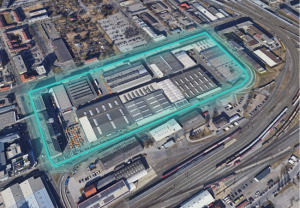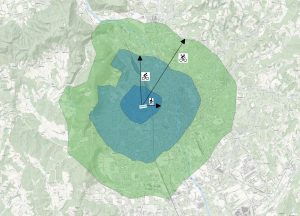Unkategorisiert
Der Standort von Siemens Mobility Austria GmbH in Graz, in unmittelbarer Nähe zum Grazer Hauptbahnhof, bietet Arbeitsplätze für rund 1.600 Mitarbeiter:innen. Die intensivere Nutzung der Flächen und der erhöhte Parkdruck im Umfeld machten die Erstellung eines gesamtheitlichen Mobilitätskonzepts durch PLANUM notwendig.
Die veränderte Parkplatzsituation erforderte neben der Kfz-Mobilität eine Gesamtbetrachtung aller alternativen Mobilitätsformen der Mitarbeiter:innen. Für das Konzept des betrieblichen Mobilitätsmanagements wurden folgende Mobilitätsformen betrachtet:
Pkw-Verkehr (Pendlerwege und dienstliche Wege)
Aktive Mobilitätsformen (Zu-Fuß-Gehen, Radfahren)
Öffentliche Verkehrsmittel (Bus und Bahn)
Betriebliche Angebote (z.B. Firmenbusse)
Multimodalität (ÖPNV+Fahrrad/Fuß, PKW+ÖPNV etc.)
Wichtiger Bestandteil des Konzepts waren die Verkehrserhebungen und eine Online-Befragung, die Rückschlüsse über das Mobilitätsverhalten der Mitarbeiter:innen zuließ. Die Antwortquote der Befragung war mit rund 63% sehr hoch und erlaubte eine zielgerichtete Maßnahmenentwicklung. Das erarbeitete Maßnahmenpaket setzt sich zusammen aus einer abgestimmten Kombination der Alternativen an Mobilitätsangeboten für die Mitarbeiter:innen.
Das betriebliche Mobilitätskonzept ist notwendig zur Sicherung der nachhaltigen Erreichbarkeit des Betriebsstandortes, da es als wichtige Grundlage für die Diskussion mit der Stadt Graz über künftige Verkehrslösungen im Umfeld dient.

(PLANUM 2023 mit Daten von basemap)
Rückfragen:
DI Alexander Schaffenberger
Dr. Kurt Fallast






 Wir dürfen uns zusammen mit dem
Wir dürfen uns zusammen mit dem